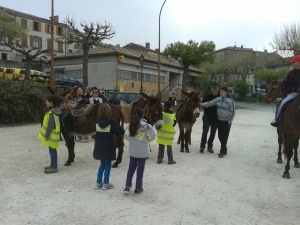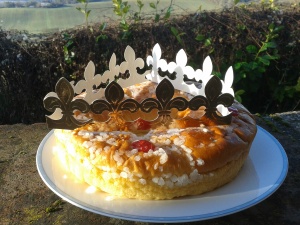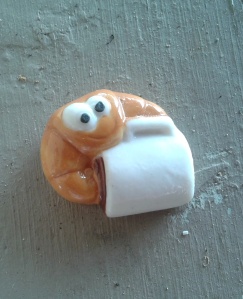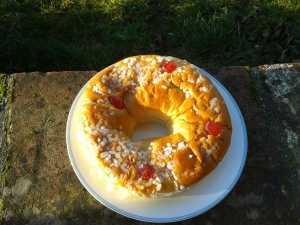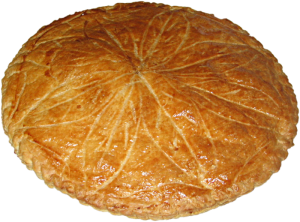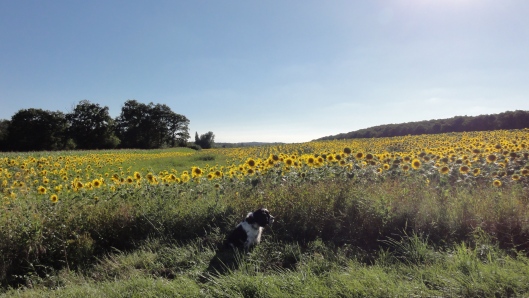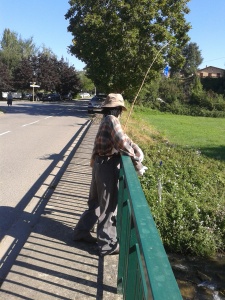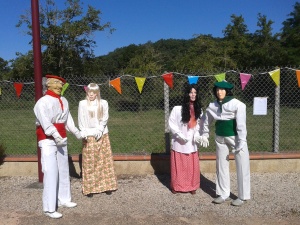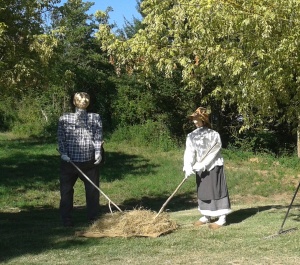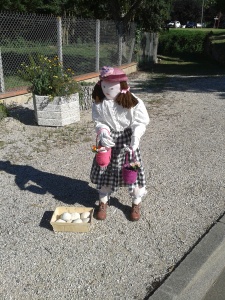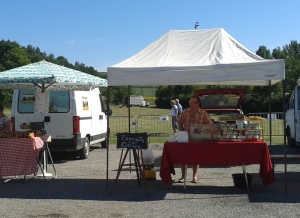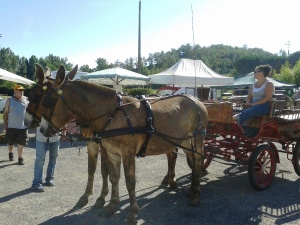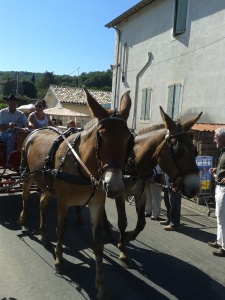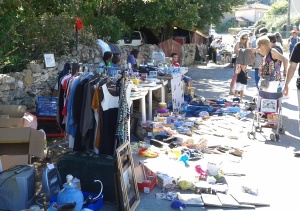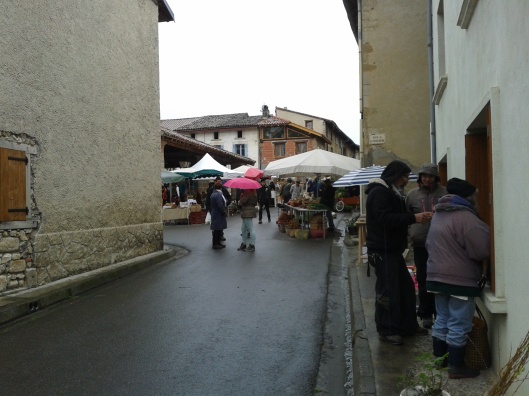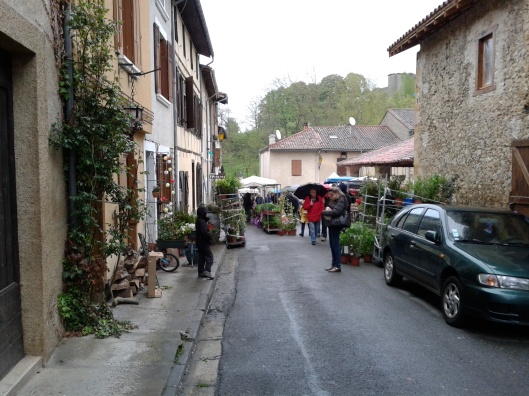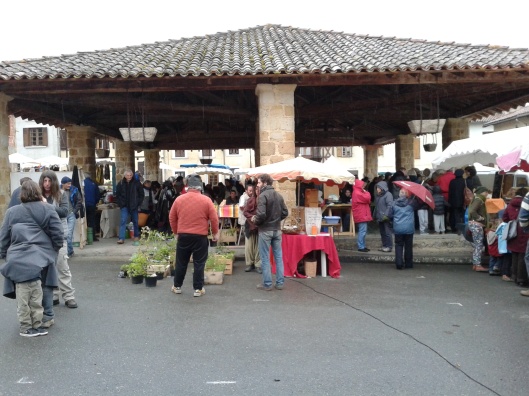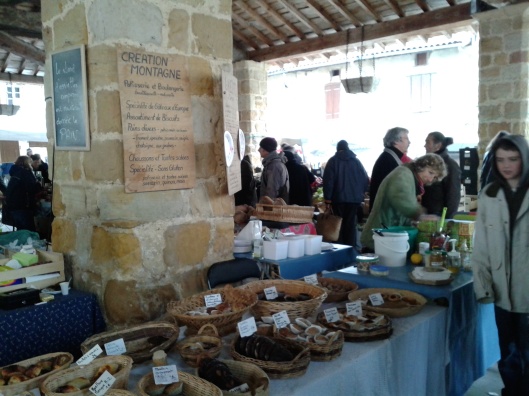Tags
aurignac, centre equestre aurignac, French attitude to litter, french pyrenees life, French village community
Each year in April, the members of the Aurignac riding club, the local walking club, the tourist office and anyone else who fancies joining in meet up for a day out with a difference. The lovely network of paths on the hills behind the town were originally largely laid out by the members of the riding club, and the tourist office contributed signposts and maps, so everyone feels an almost proprietorial interest in keeping them open.
Although Aurignac has very little in the way of a litter problem, there’s an annual excursion of volunteers armed with gloves and bin bags who walk the paths, collect any rubbish, remove branches and overhanging brambles and generally tidy things up.
This year, we were pleased to be around at the right time and happily joined in with the group of local residents and children. Jean Francois from the local ironmongers provided his four donkeys, to carry rubbish, picnics and any small children unable to last the course, and members of the riding club joined us on horseback.
We set off in the unusually warm Spring morning, eyes peeled for errant rubbish. The children proved the most eagle eyed, and were soon running ahead and coming back with bits of old plastic blown in from neighbouring silage clamps. In the way of actual rubbish there was very little – the odd scrap of paper or plastic bottle – and once a few items had been added to the
donkey panier there was plenty of time to stroll and chat with members of the group.
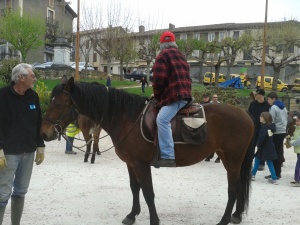
Michel, president of the riding club, was responsible for trimming back errant brambles on the paths

The children were very enthusiastic collectors, and were disappointed to be told we couldn’t take two discarded car tyres with us (we later collected them by car).
Our route took us from the car park Forail, through the ancient stone porte de Benque which leads out of the town from the main street, past the old disused abbatoir, and up to the cross, the highest point of our journey. By this stage, two of the donkeys were carrying tired children as well as supplies for lunch!
We followed the path towards the nearby hamlet of Peron before climbing up towards the ridge, past the Lion rock and down across the main road towards the prehistoric rock shelter that’s a feature of the town’s history. After a three hour hike, during which we did manage to fill four rubbish bags between our group of twenty, we headed to the other side of the hill and up to the Col de Martin for lunch with the feeling of a job well done.
 In true French style the rest of our group produced a three course meal from the donkey paniers, and soon wild boar pate, charcuterie and some wicked eau de vie were circulating freely. Our own contribution of lemon drizzle cake attracted suspicious glances at first, but once our French friends had overcome their native reluctance to eat English food it went down very well.
In true French style the rest of our group produced a three course meal from the donkey paniers, and soon wild boar pate, charcuterie and some wicked eau de vie were circulating freely. Our own contribution of lemon drizzle cake attracted suspicious glances at first, but once our French friends had overcome their native reluctance to eat English food it went down very well.
Monty, one of only two dogs in the group, collapsed for a rest and only perked up when it was time to frisk the picnic area for leftovers.
 Back at the car park, one little girl was clearly keen to take her new donkey friend home, if only he’d fit in the back of the car.
Back at the car park, one little girl was clearly keen to take her new donkey friend home, if only he’d fit in the back of the car.
There was a great community feel about the whole expedition, and somehow it’s hard to imagine such an event taking place in the UK, particularly with such enthusiastic younger helpers.
As we miss out on many of these community events, we were glad to be able to join in this one, although Monty found it all rather hard work and fell asleep in the car going home. Or possibly that might have been due to too much charcuterie.


